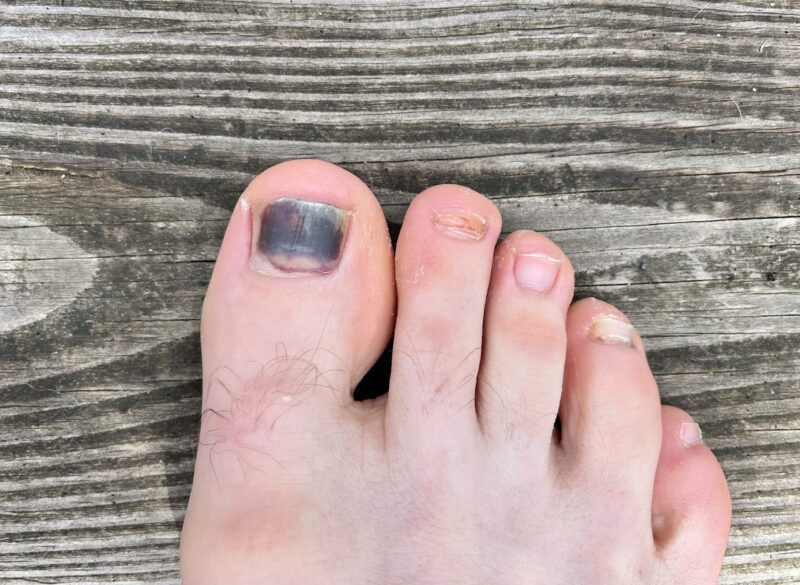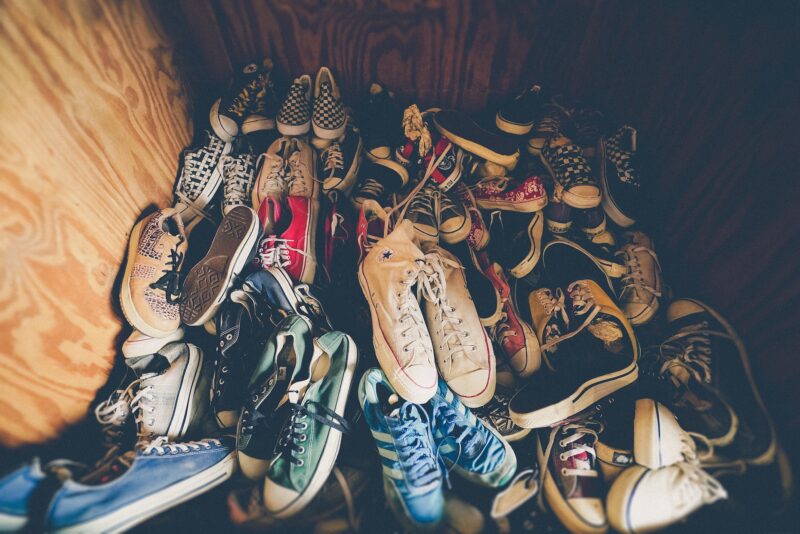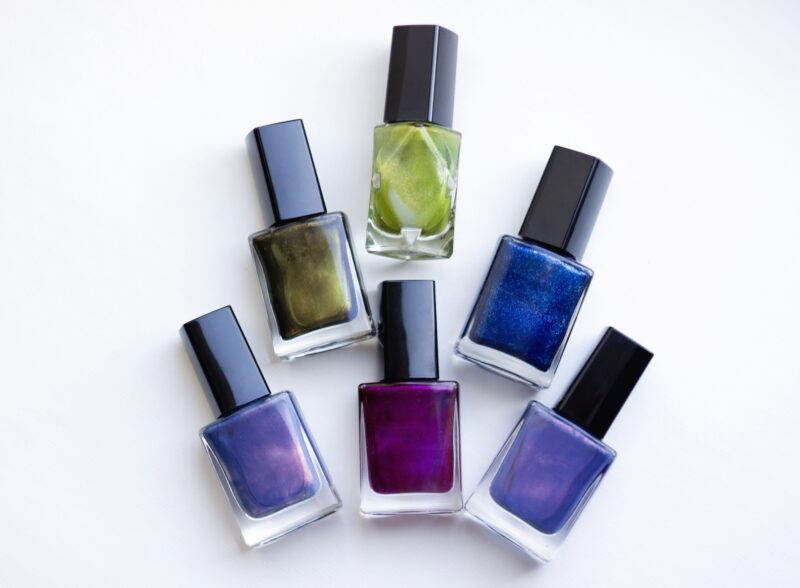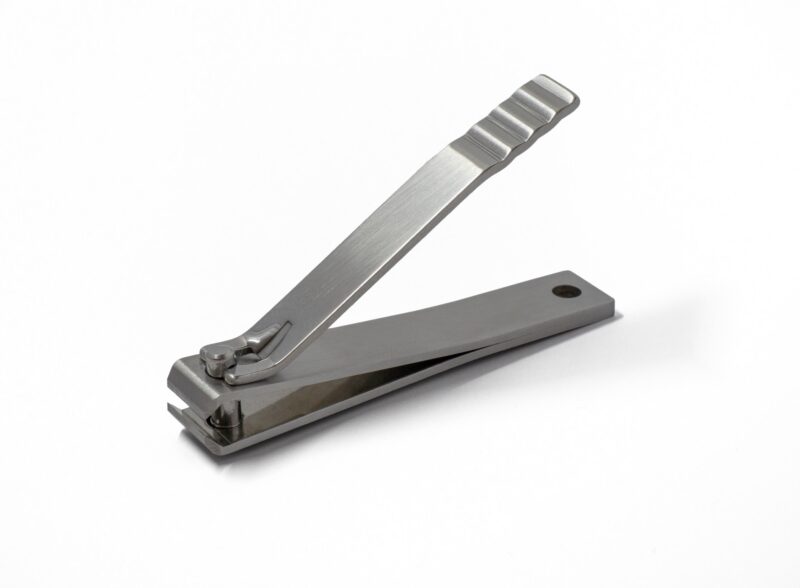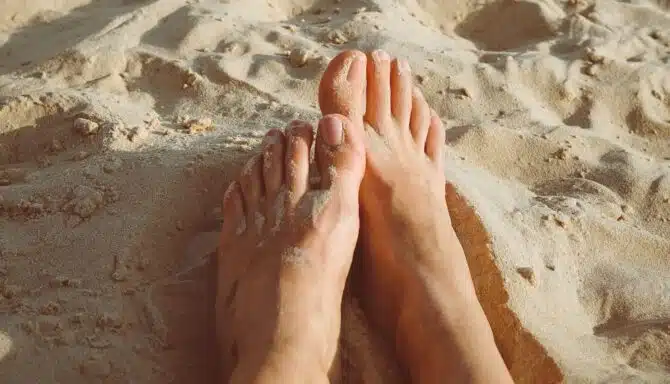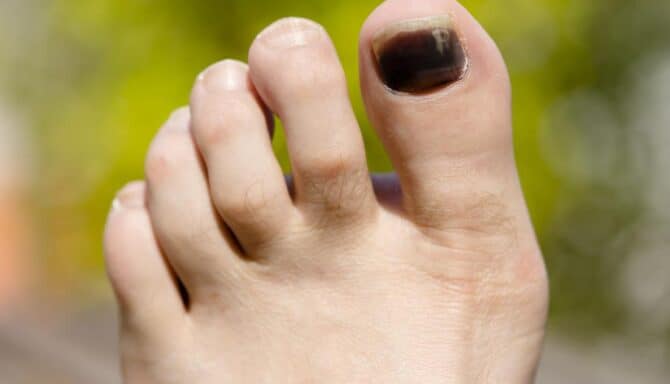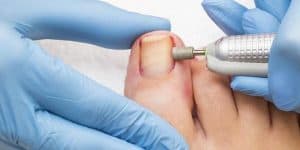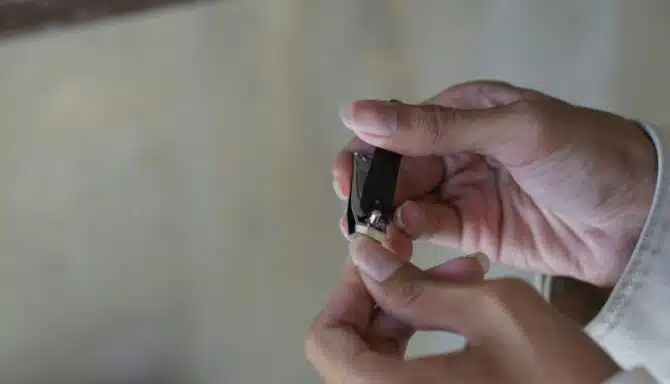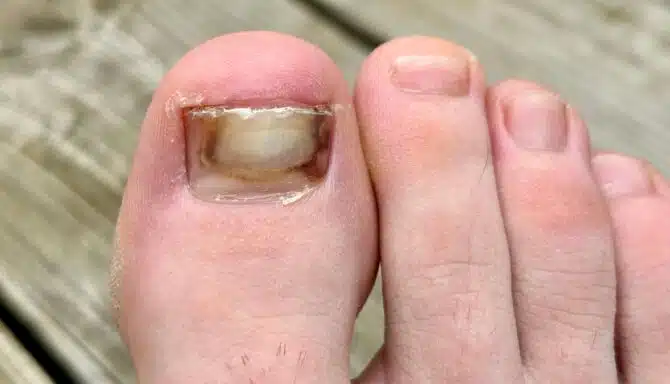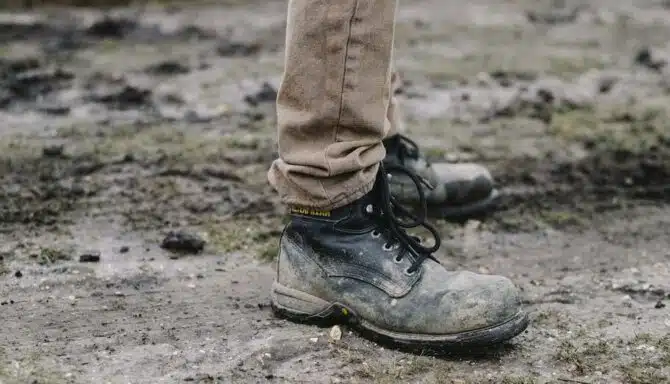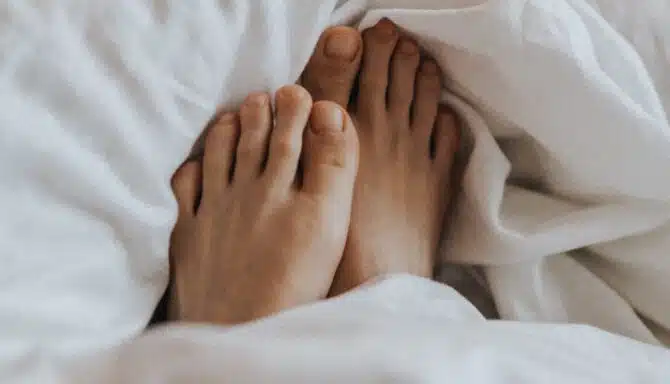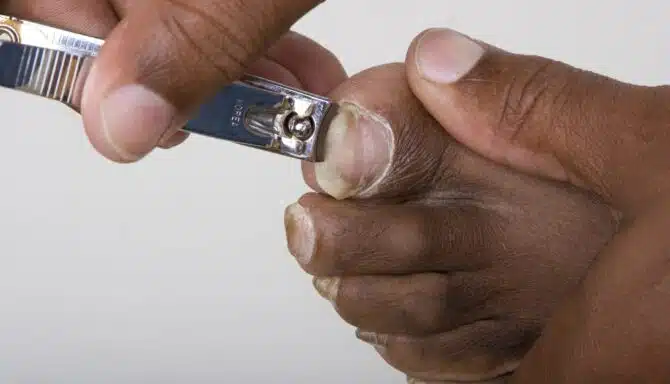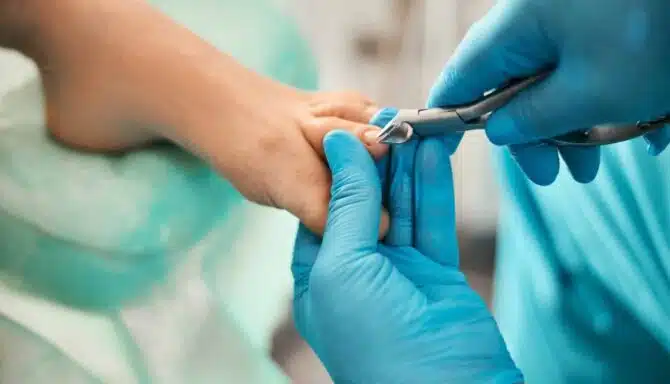Black toenails can be an unsightly but under-discussed topic for some individuals. The condition can stem from an injury, an underlying health issue, or ill-fitting shoes. A black toenail is likely a bruise under the nail, called a subungual hematoma.
Seeing a black toenail at first glance can be alarming and uncomfortable, especially for first-timers. Fortunately, the discolouration and potential pain associated with blackened toenails are generally not a cause for concern.
While the condition may not always be serious, understanding its possible causes, prevention methods, and treatment options is crucial for maintaining overall foot health and finding relief. Today, we’ll focus on black toenails.
In this article, you’ll learn more about the common causes, treatment options, and prevention tips for black toenails:
Causes of black toenails
Causes of black toenails typically fall under three categories: injury, footwear, or an underlying health issue like a fungal infection. Below we dive into the three most likely culprits in more depth.
Trauma or injury
Stubbing the toe, dropping something heavy on your foot, or repetitive pressure from running or soccer can lead to a black toenail. Repeated pressure or friction to the nail bed can damage the blood vessels under the nail, ultimately creating a black toenail. For instance, marathon runners often get black toenails after running long distances.
Ill-fitting footwear
Shoes that are too tight or do not provide adequate toe room can cause repeated pressure and friction on the toenail. Whether on the job or wearing the wrong shoes for your partaking activity, ill-fitting footwear can be the culprit for black toenails.
Fungal infection
Sometimes, a black toenail can result from a fungal infection that affects the nail bed.
Rare causes
If none of the above apply to you, you shouldn’t necessarily rule out rarer causes. In this case, consult a medical professional for a proper diagnosis.
Rare causes of black toenails include:
- Malignant melanoma
- Chronic ingrown nail
- Other health problems
Treatment for a black toenail
Generally, black toenails aren’t severe and are more of a sight for sore eyes. If you have a black toenail, you can do the following:
- Observation and self-care: If the black toenail is painless and there are no signs of infection, you can let the nail heal independently. It will typically take several weeks for the discoloured nail to grow naturally. The discolouration could take 6-8 months to disappear as the nail grows and you trim away the culprit.
- Rest and elevation: Resting and elevating the foot above heart level can help reduce swelling and promote healing.
- Ice: Applying ice packs wrapped in a cloth to the affected area can help reduce pain, inflammation, and swelling.
- Pain relief: Over-the-counter pain medications, such as acetaminophen or ibuprofen, can alleviate pain if necessary.
- Protective padding: You can use cushioned bandages or moleskin padding to protect the affected toe to prevent further irritation.
- Professional treatment: Sometimes, a foot specialist may need to drain the blood from under the nail to relieve pressure and facilitate healing.
- Paint your nails: If aesthetics are a primary concern, you can cover the nail with nail polish to hide the visible signs of a black toenail. Just first make sure you don’t have any exposed skin or abrasions, as this can then lead to infection.
Prevention tips for black toenails
Prevention for black toenails hones in on proper nail care and hygiene and investing in the proper footwear:
- Invest in your footwear: Ensure that your shoes fit well and provide enough room for your toes to move freely. Avoid tight or narrow shoes that can cause pressure on the toenails. Investing in the proper footwear also means having specific footwear for each purpose – for instance, at work, casually, or while playing a sport.
- Protect your feet: If you engage in activities that pose a higher risk of a toe injury, such as sports or heavy lifting, consider wearing protective footwear or toe guards.
- Trim your toenails: Trim your toenails straight and avoid cutting them too short to prevent trauma or ingrown nails. For more tips on how to cut your toenails, read our nail trimming guide. Further, use toenail clippers for your toenails, not fingernail clippers.
- Maintain good foot hygiene and habits: Keep your feet clean and dry to minimize the risk of fungal infections affecting the nails.
- Regular inspections: Regularly examine your feet and nails for any signs of damage or discolouration. Promptly address any issues to prevent further complications.
If the black toenail is accompanied by severe pain, signs of infection (such as redness, swelling, or discharge), or if it doesn’t improve within a few weeks, it’s advisable to consult a healthcare professional. They can assess the condition, provide appropriate treatment, and ensure no underlying issues require further attention.

